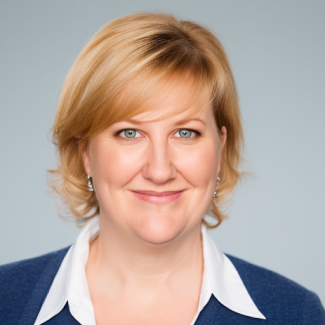Q+A with Cherry Hill Glass, Dow, Press Glass | Reimagining Skylines
Innovative sealant sustainability program is paving the way for sustainable carbon-neutral architecture

Above: Two Clinton Park in New Rochelle, New York. Photo by Steven Bitondo, courtesy of Grace—LLC/Capell.
In the heart of New Rochelle, New York, the skyline has witnessed a transformative leap forward with the completion of the Two Clinton Park luxury apartments, a groundbreaking project that not only boasts stunning architectural design but also pioneers sustainability within the construction sector. Spanning 145,000 square feet, this sleek design showcases a unitized aluminum curtain wall system, meticulously crafted with industry-first carbon-neutral silicones from Dow, setting a new standard for eco-friendly building practices.
The innovative use of DOWSIL™ products on the project—including silicone sealants for insulating glass, structural glazing, installation and weatherproofing—embodies a multifaceted approach to reducing embodied carbon without compromising on performance or aesthetics. In addition to the carbon-neutral silicone sealants, the project also utilizes high-performance insulating glass curtain walls made with low-emissivity SunGuard SuperNeutral 68 coated glass, aluminum composite panels, glass guardrails and perforated screen walls. The project marks a significant milestone as it is the first building in North America constructed using carbon-neutral silicones, developed by Dow.
This initiative addresses the construction industry’s ongoing challenges regarding sustainability without compromising performance. In 2021, Dow launched its Carbon-Neutral Silicones for Building Façades program, featuring verified carbon-neutral silicones aimed at reducing embodied carbon in building designs. Dow benefits from backward integration in its supply chain, having made long-term investments to decrease carbon emissions during silicon metal production, effectively lowering the embodied carbon footprint of its silicones.
All façade components of the Two Clinton Park project incorporated Dow's Carbon-Neutral Silicones, from the structural sealant used on the curtain wall to the weatherproofing sealants. The project's stakeholders, including curtain wall contractor Cherry Hill Glass Co. and glass fabricator Press Glass Inc., actively embraced the sustainability initiatives, which contributed to the project's eligibility for a Carbon Neutrality Certificate. This collaboration highlights the potential for sustainable construction practices to drive positive change in the industry while maintaining high standards in building performance and aesthetics.
Jessica Mijal, marketing manager, Dow; Sean Capshaw, vice president, Cherry Hill Glass Co.; and Brett Ashley, president, Press Glass Inc., sat down with Glass Magazine to discuss how Two Clinton Park serves as an inspiring blueprint for urban revitalization, demonstrating how forward-thinking materials and collaborative efforts in design and construction can harmoniously blend luxury living with environmental responsibility.
Leading the way with carbon-neutral silicones
GM: Can you explain the development process for carbon-neutral silicones and what specific features differentiate them from traditional silicones?
Jessica Mijal, Dow: The biggest carbon footprint contribution for silicones resides in raw material extraction and processing, transport of these materials to the manufacturer, and the actual manufacturing process. Thanks to back-integration and full ownership of our production process, Dow has made the choice to reduce the carbon footprint of its raw material extraction, processing and transportation, as well as the sealant manufacturing process, therefore lowering the carbon footprint of the finished DOWSIL™ sealants sold to the market. For example, raw materials are sourced and produced locally, and the energy-intensive production process of silicon metal is supplied with 100% renewable power. With a lower carbon footprint manufacturing process, very little carbon is left to inset (a method for reducing residual emissions within a company's own supply chain). This process has allowed for specific Dow products to be certified under PAS 2060, a leading internationally recognized certification for carbon neutrality.
Dow's global carbon-neutral silicone offering for façade (in North America, DOWSIL™ 982 Silicone Insulating Glass Sealant, DOWSIL™ 983 Structural Glazing Sealant, DOWSIL™ 791 Weatherproofing Sealant, DOWSIL™ 795 Silicone Building Sealant, falling under the Decarbia™ brand) maintain the same formulation and manufacturing process as their traditional counterparts with lower environmental impact achieved through an insetting program. However, with a lower carbon footprint manufacturing process already in place, to achieve carbon neutrality, only a small portion of the carbon emissions must be inset to achieve carbon neutrality. This necessitates the need to accurately track the volume requiring insetting. Dow has simplified the complex process for the ease of our customers where a simple form to track this volume needs to be completed to receive a carbon neutrality certificate for DOWSIL™ products.
GM: How do the carbon-neutral sealants perform in comparison to traditional products in terms of durability and efficiency?
Brett Ashley, Press Glass: Dow’s carbon-neutral silicone sealants help reduce embodied carbon in high-performance building facades while delivering the same high level of performance as traditional silicone products. The formulas, ingredients and durability remain unchanged, meaning there’s no compromise in quality or long-term efficiency. From a fabrication standpoint, the transition is seamless—these sealants integrate smoothly into our existing processes without requiring adjustments.
Importantly, we continue to achieve the same U-values and overall thermal performance in our insulating glass units, ensuring they meet or exceed energy efficiency standards. Choosing carbon-neutral silicone allows us and our customers to reduce environmental impact without sacrificing product reliability or performance.
Sean Capshaw, Cherry Hill: The advantage of the Dow’s carbon-neutral sealants is that they deliver the same high level of performance as traditional silicone products because the formulas, ingredients and durability remain unchanged. This results in no compromise in quality or long-term efficiency. From an installation standpoint, no material transition is needed— the only difference was needing to work with Dow to undergo the carbon neutrality verification process.
GM: How did you integrate carbon-neutral sealants into the unitized curtainwall system without altering your existing building processes?
Sean Capshaw: Cherry Hill Glass collaborated with Dow to understand the unique characteristics of their carbon-neutral DOWSIL™ silicone sealants. We were allowed to maintain our installation procedures, while adopting the carbon-neutral program. This allowed us to continue using our established workflow while adopting the carbon-neutral program. Ultimately, by keeping the integration process simple and collaborative, we were able to maintain the efficiency of our existing processes while elevating our commitment to sustainability. The result is a high-performing, energy-efficient curtain wall system that also aligns with our long-term environmental goals.
GM: How does Dow plan to expand its Carbon-Neutral Silicones for Building Facades program in the future, and what goals are set for sustainability within the company?
Jessica Mijal: Dow is holistically committed to advancing the adoption of low carbon footprint and sustainable silicones through industry collaboration. We are enthusiastic about partnering with architects and consultants to integrate these sealants into specifications. Additionally, we aim to work with insulating glass manufacturers, glaziers, and installers to lower the carbon footprint of their products and services and offer their customers carbon-neutral silicone options. We strive to support building owners in achieving green building certification by utilizing these silicones to earn points in various programs. Dow’s goal is to influence less carbon intensive designs for facades through these industry collaborations. Looking ahead, Dow is exploring future technologies in circularity and bio-based raw materials with the goal of offering additional sustainable products beyond carbon neutrality.
Setting new standards in sustainable construction
GM: Given your history of working with Dow’s sealants, how do you see the industry evolving in terms of adopting sustainable building materials?
Brett Ashley: The shift toward sustainable building materials is well underway. This transformation is being driven by stricter building codes, growing climate change awareness, and the increasing demand for energy-efficient buildings. In the glass industry, we’re seeing rapid advancements, particularly in low-e coatings, which now offer exceptional energy performance by reducing heat loss while allowing natural light to pass through. Additionally, low-carbon glass coatings are emerging as a powerful solution to further reduce the environmental footprint of building envelopes.
Glass itself is inherently sustainable—it’s recyclable with minimum loss of quality.
However, there is still room for improvement, especially in terms of reducing the carbon intensity of the manufacturing process and expanding circular economy initiatives. As demand continues to grow for greener construction, we expect ongoing innovation in materials, coatings, and fabrication processes that will push the industry toward more environmentally responsible and transparent production standards.
Industry collaborations drive change
GM: How has your collaboration with Press Glass and Cherry Hill Glass influenced the adoption of carbon-neutral products in the marketplace?
Jessica Mijal, Dow: We are proud of the Two Clinton Park project and hope it sets a precedent for future initiatives. As many firms in our industry pursue decarbonization goals, Dow is committed to supporting these efforts. By specializing in silicone sealants, we have introduced carbon-neutral silicone sealants to the market, offering a sustainable sealant option our customers can take advantage of to help them achieve their sustainability objectives. We strive to pursue additional collaborations across the façade value chain and bring more carbon-neutral facades into fruition, helping our customers reach their goals and learning more about their sustainability needs in the process.
GM: How has the collaborative approach with Dow and Press Glass changed the way Cherry Hill Glass operates or approaches new projects?
Sean Capshaw: Our collaboration with Dow and Press Glass has fundamentally transformed the way Cherry Hill Glass approaches both new projects and our overall operations. It’s been an enlightening journey that has not only expanded our capabilities but also enhanced our ability to deliver innovative, sustainable solutions to our clients.
GM: What do you believe is essential for successful collaboration among different stakeholders in the construction industry?
Brett Ashley: Successful collaboration in the construction industry hinges on transparent communication and a shared understanding of project goals. At Press Glass, we believe open, honest dialogue and actively listening to the needs of all stakeholders—from architects and engineers to fabricators and installers—are key to building strong partnerships. It’s also important for our team to have a deep understanding of available solutions, remain open-minded, and be willing to think creatively to overcome challenges. We’ve had many cases where a customer approached us with a request for a specific product we couldn’t provide—but instead of turning them away, we immediately discussed alternatives internally and proposed a different, effective solution.
Conversations around sustainability
GM: What are some key sustainability trends you’re seeing in the industry around the use of carbon-neutral products?
Sean Capshaw: The integration of carbon-neutral products into the glazing industry is not merely a trend but a fundamental shift towards sustainable construction practices. As a glazing contractor, we've observed a pivotal shift towards sustainability, particularly for building facades. These sealants not only withstand the rigorous requirements of structural glazing but also significantly reduce the carbon footprint associated with construction materials. As environmental regulations become more stringent worldwide, driven by initiatives like the European Union's Circular Economy Action Plan, there is a growing demand for sustainable practices and products. The circular economy is further bolstered by the glass industry’s embrace of recycling, as every 10% increase in recycled glass yields a 5% reduction in carbon dioxide emissions, underscoring the critical link between material reuse and emissions reduction.
Technological innovations are also paving the way for sustainable construction, with advancements in glass manufacturing leading to high-performance products that improve energy efficiency while minimizing environmental impact. Collaborative efforts among manufacturers, contractors and suppliers are crucial in fostering the development of carbon-neutral options that meet modern performance standards. By aligning industrial initiatives with sustainability goals, the construction sector is moving towards a more circular economy, showcasing a commitment to reducing embodied carbon and enhancing overall environmental responsibility.
Jessica Mijal: We have observed a growing emphasis on selecting lower-carbon options for high-volume materials used in projects. However, firms truly committed to reducing their carbon footprint should consider sourcing the most sustainable option (with credible third-party certifications to confirm claim validity) for all required materials. While we understand the need to prioritize efforts, Dow simplifies this process. Utilizing Dow’s offering of third-party verified, carbon-neutral silicones is a straightforward and reliable way to enhance the sustainability of your project.
GM: How do you educate clients and industry partners about the benefits of using carbon-neutral materials?
Jessica Mijal: Dow has showcased our Decarbia™ carbon-neutral materials at numerous conferences and events. We will be presenting the advantages of carbon-neutral materials at ZAK Chicago in September and exhibiting these products at GlassBuild in November. Dow offers an AIA-accredited presentation, which we are pleased to deliver to any interested firms. Additionally, we are available for informal discussions and to address any inquiries. Our website provides extensive information on the program and guidance on initiating the certification process for Dow's carbon-neutral silicones.
Overcoming challenges in sustainable adoption
GM: What are some of the challenges faced by glazing contractors when it comes to adopting sustainable materials, and how can they be addressed?
Sean Capshaw: There are several challenges. Implementing sustainable materials in construction often presents challenges related to cost, availability, training and regulatory compliance. Clients may hesitate to invest in sustainable materials due to their higher initial costs compared to traditional options, even though long-term savings on energy consumption and maintenance can offset the expense. To address this, clear communication about the benefits, alongside demonstrated performance and energy savings from manufacturers like Dow and Press Glass, can help clients recognize the value. Offering financing options can further alleviate budget constraints. However, sourcing sustainable materials can be problematic, particularly for high-performance glass that has longer lead times or limited availability in some regions. Strengthening partnerships with committed suppliers and exploring local supply chains can ensure consistent access to these materials while meeting project deadlines.
Also, the installation of advanced glass products often requires specialized knowledge, indicating a need for ongoing training and professional development for workers in the industry. Collaborating with industry leaders to provide training and encouraging certification programs can bridge skill gaps and prevent installation errors. Additionally, regulatory compliance poses another hurdle, as differing local codes may not reflect the latest sustainable innovations. Active engagement with organizations like glass.org and collaboration with architects and engineers can facilitate compliance and promote the adoption of cutting-edge materials.
GM: What were some of the challenges in getting third-party certifications for the carbon-neutral silicones, and how do these certifications add credibility to the product?
Jessica Mijal: Dow has made conscious efforts and investments to make sure that low carbon claims are independently verified. This helps ensure credibility for Dow and peace of mind for our customers. Dow's baseline product carbon footprint as per ISO 14040/14044 and product carbon neutrality as per PAS 2060 have both been verified by an independent 3rd party. Also the projects which generate the carbon insets, have REDD+ and VERRA registrations.
GM: Can you share some examples of how Press Glass has used its expertise to help other customers achieve sustainability targets or certifications such as LEED?
Brett Ashley: Press Glass actively supports our customers in reaching sustainability goals and complying with LEED requirements for their projects. With regards to LEED, we work closely with our float glass and low-e coating partners to qualify each project for LEED points. We confirm items such as glass recycled content and transportation distances from glass production site to fabrication plant to final project installation. We also collaborate with suppliers to provide Environmental Product Declarations, or EPDs, which offer transparency on the environmental impact of various products. This documentation supports project teams in earning credits under LEED and meeting other green building standards.
Additionally, our high-performing double and triple insulating glass units are fabricated using Dow carbon-neutral silicone, and often feature multiple low-e coatings, argon filled airspaces and warm edge spacers to help drive thermal performance and meet sustainability goals. Our technical team works with customers, architects and façade consultants early in design to set sustainability expectations and any energy model requirements.
Navigating towards a sustainable future
GM: Are there plans for Press Glass to further incorporate sustainable materials or practices in upcoming projects?
Brett Ashley: Press Glass is fully committed to supporting the future of sustainable construction. We continuously work to meet and exceed the requirements of green building standards by supplying high-performance, energy-efficient materials, including advanced glass types, eco-friendly interlayers, warm edge spacers, carbon-neutral silicone and more.
Our team stays up to date on emerging technologies and is always ready to advise customers on the most sustainable solutions tailored to their project needs. As the industry evolves, we remain focused on innovation, transparency and collaboration to help our partners meet their environmental goals without compromising performance.
Shaping future projects
GM: What lessons from the Two Clinton Park project can be applied to future sustainable construction projects?
Sean Capshaw: The project was a landmark project for Cherry Hill Glass and a significant milestone in integrating sustainable practices into glazing systems. Collaboration is key to success in sustainable construction, as demonstrated in the Two Clinton Park project, where the integration of materials from suppliers like Dow and Press Glass required a coordinated effort among all stakeholders, including architects, engineers, and contractors, to ensure smooth procurement and installation. Looking ahead, fostering a collaborative environment from the outset will be crucial for future projects to meet sustainability goals without compromising performance or timelines. Moreover, integrating sustainability into the design and planning phases, such as using carbon-neutral DOWSIL™ sealants early in the process, enables optimization of design choices for enhanced energy efficiency and environmental performance. Sustainability should not be an afterthought; instead, it must be woven into the initial conversation to create a more streamlined and cost-effective path forward by employing low-carbon materials and energy-efficient practices. The emphasis on energy efficiency as the foundation of sustainability was evident in the project's focus on energy-efficient glazing systems and sealants, which contributed to the building's overall energy performance and LEED certification. Future projects should similarly prioritize high-performance materials to reduce energy consumption and enhance occupant comfort. Additionally, overcoming logistical and supply chain challenges is critical, as demonstrated by the need for coordination among multiple suppliers and proactive supply chain management to mitigate risks. Building strong relationships with trusted suppliers who prioritize sustainability will help ensure material availability. Lastly, continuous education and training for installation teams on new sustainable materials are essential for successful implementation. Providing comprehensive training on products like Dow’s carbon-neutral sealant ensures correct application and efficiency, highlighting the importance of ongoing workforce development as new technologies and practices emerge.
Learn More
View the case study — Vibrant Construction Built with Industry-First Carbon-Neutral Silicones from Dow — of Two Clinton Park in New Rochelle, New York.



